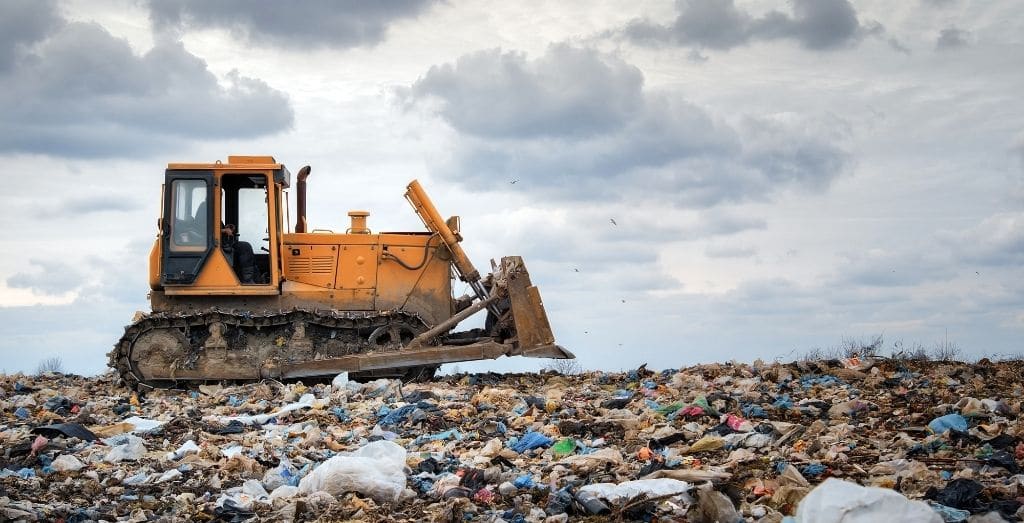As the economy and industries continue to improve, statistics show that countries worldwide produce more waste year after year.
World Bank suggested that without implementing proactive measures, waste production in 2050 will skyrocket up to 70% higher than in 2018, from 2 billion to 3.4 billion tons. Moreover, citizens in urban areas have doubled their daily waste generation from 0.6 kg to 1.2 kg per person within ten (10) years.
Along those lines, we brought together the top ten (10) countries that generate the most waste. This aims to give you a good idea about the massive impact of rubbish on our environment by the numbers and how a country’s economy influences its waste generation.
Serbia
Construction and industry rubbish is the primary form of waste produced in Serbia — amounting to almost 75% of the total rubbish generated by the country. Because of its residential construction industry, Serbia currently experiences an economic boom, with construction permits reaching a record high.
- Population: 8,703,114
- Total waste per annum: 2.62 million tons
- Per capita waste per annum: 8.9 tons
- Estimated waste treatment recycling: 0.8%
Ukraine
On average, Ukraine generates roughly 475 million tons of rubbish annually, about 95% of which consisting of toxic and hazardous waste. While the country sits at the ninth spot for most waste produced, they hold the record for producing the highest amount of hazardous waste per year.
Moreover, the remaining percentage of rubbish comes as agricultural and municipal solid waste, including farm and poultry rubbish, organic waste from harvests, fertiliser run-offs, and pesticides.
- Population: 43,511,519
- Total waste per annum: 474,106,025 tons
- Per capita waste per annum: 10.6 tons
- Estimated waste treatment recycling: 3.2%
Luxembourg
Despite being a small nation, Luxembourg found its place in the top ten with more than 7 million tons of produced waste, with a small portion of it as municipal solid waste.
These include household rubbish, commercial and office waste, or organic waste. The remaining portion of the generated rubbish is primarily construction and demolition rubbish.
- Population: 634,928
- Total waste per annum: 7,016,503 tons
- Per capita waste per annum: 11.8 tons
- Estimated waste treatment recycling: 28.4%
Sweden
On average, Sweden produces about 163 million tons of rubbish annually, where roughly 94% of which coming from demolition and construction waste. The remaining portion consists of hazardous and medical waste.
- Population: 10,153,695
- Total waste per annum: 163,199,471 tons
- Per capita waste per annum: 16.3 tons
- Estimated waste treatment recycling: 32.4%
Armenia
Armenia tops the fifth spot with its massive industrial waste production per year. While it generates relatively little municipal, construction, and agricultural rubbish, it still produces about 47 million tons of industrial waste.
- Population: 2,967,995
- Total waste per annum: 47,889,000 tons
- Per capita waste per annum: 16.3 tons
- Estimated waste treatment recycling: N/A
Finland
Roughly 3% of Finland’s overall waste generated comes from municipal solid waste,97% of which mostly comes from. Besides that, about 50% of their total rubbish gets incinerated. However, a lot of it goes into recycling as one of Europe’s highly advocated waste disposal methods.
- Population: 5,548,100
- Total waste per annum: 91,698,449 tons
- Per capita waste per annum: 16.6 tons
- Estimated waste treatment recycling: 28.1%
Estonia
The developing country of Estonia heavily relies on tourism for its economy, with 4.6 tourists for every local resident. As a result, they produce as much as 31 million tons of rubbish — one-third of that is harmful waste.
Estonia also produces 35 times more hazardous waste than the average per capita identified by the EU. Most of the country’s hazardous waste is from the oil shale industry.
- Population: 1,327,299
- Total waste per annum: 30,912,409 tons
- Per capita waste per annum: 23.5 tons
- Estimated waste treatment recycling: 24.7%
United States
The United States isn’t just among the leading countries in terms of economy, but also waste produced per annum. As the third most populated country, the US produces about 260 million tons of municipal solid waste.
If we include other waste categories, including industrial, electronic, agricultural, and medical/hazardous waste, the US would have produced more than 8.4 billion tons of waste annually.
- Population: 332,659,090
- Total waste per annum: 8,425,840,000 tons
- Per capita waste per annum: 25.9 tons
- Estimated waste treatment recycling: 34.6%
Bulgaria
While Bulgaria isn’t as massive and populated as the United States, it still has a higher waste generated per capita than the western country. That’s because Bulgaria’s construction industry gets the lion’s share of more than 172 million tons of waste generated per year.
Bulgaria holds the fifth-highest recorded waste data among 68 countries with available construction and demolition waste information.
- Population: 6,904,204
- Total waste per annum: 189,141,945 tons
- Per capita waste per annum: 26.7 tons
- Estimated waste treatment recycling: 19.0%
Canada
Canada’s industrial and agricultural waste production is responsible for more than 1.3 billion tons of rubbish generated by the country.
Besides, Canada topped the charts with the highest total waste produced in 2017, with about 1.3 billion tons of rubbish generated. That’s about 36 tons per individual.
- Population: 38,029,965
- Total waste per annum: 1,325,480,289 tons
- Per capita waste per annum: 36.1 tons
- Estimated waste treatment recycling: 20.6%
Summary
While the countries listed above have varying territorial size and population density, the facts imply that economic development significantly impacts overall waste generation. Moreover, lifestyle and sustainability decisions impact rubbish produced per capita.
You may also notice that China isn’t included among the top ten. That’s because while they have a staggering share of 15% of the municipal solid waste produced globally, they fall off the list when we rank the countries per capita of waste generated.
In conclusion, making an environmental impact in waste reduction and recycling involves tight coordination between the government and its people. To make sure your residential and commercial rubbish is kept away from landfills, we recommend partnering with a reliable and time-tested rubbish removal team like Paul’s Rubbish Removal. Paul and his team has been providing top quality rubbish removal services in Sydney for over a decade. Don’t hesitate to contact us for all your rubbish removal needs in Sydney.







